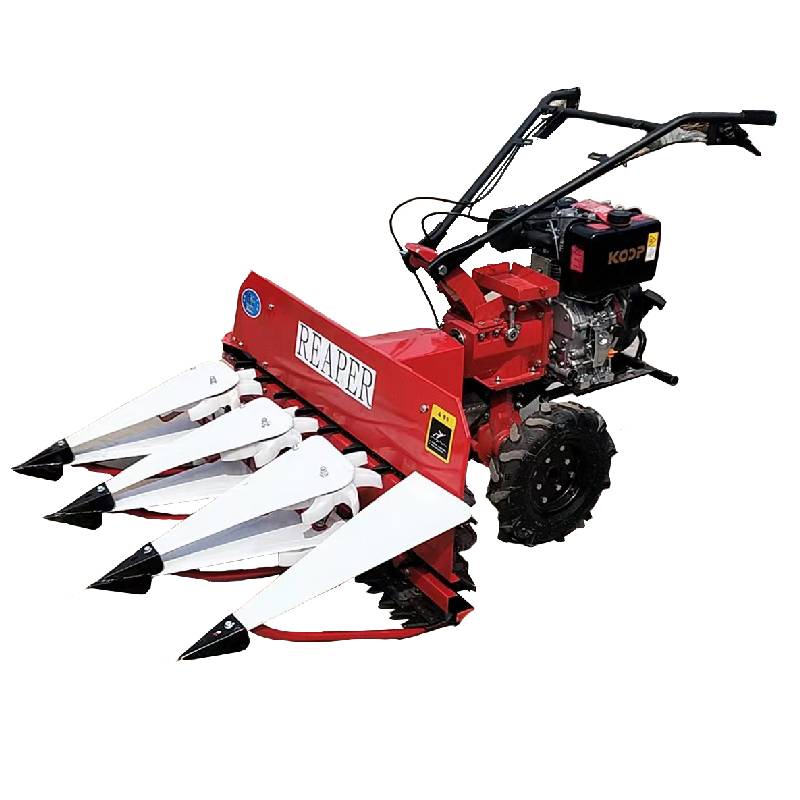Reaperbinder: Fast, Reliable Crop Harvesting & Binding
Mini tiller mounted reaper head: field notes, specs, and what actually matters
If you’re shopping for a Reaperbinder attachment for tight plots, terraces, or mixed crops, you’re not alone. The surge in micro-mechanization—especially across Asia and Africa—is real. Labor is scarce during peak harvest, and farmers want something simple that just works. To be honest, I’ve seen plenty of prototypes come and go, but the Mini tiller mounted reaper head (aka microcultivator cutter head, model GW100C2) has been earning steady word-of-mouth from growers who don’t need a full combine.

What’s trending in compact harvesting
Smaller, modular heads that bolt to 5–9 hp mini tillers are hot—farmers like the portability, and parts are inexpensive. Many customers say they value quick field repairs more than fancy electronics. And yes, price still matters, but downtime costs more.
Core applications
- Rice, wheat, barley, and oats in narrow, irregular plots
- Hillsides and paddy edges where larger machines can’t go
- Intercropped fields requiring controlled cutting width
- Rental fleets serving fragmented smallholders
Product specs (real-world oriented)
| Product name | Mini tiller mounted reaper head |
| Model | GW100C2 (microcultivator cutter head) |
| Cutting width | ≈ 100 cm (real-world may vary by crop/lodging) |
| Compatible tillers | 5–9 hp mini tillers, belt/gear output |
| Blade material | 65Mn spring steel, heat-treated (≈ HRC 45–50) |
| Cutting height | ≈ 30–150 mm adjustable |
| Throughput | 0.15–0.35 ha/h (crop density and operator skill) |
| Noise | ≈ 84–88 dB(A) at ear, measured per ISO 7960-style setup |
| Weight | ≈ 35–45 kg |
| Origin | Julu Industrial Park, Xingtai City, Hebei Province, China |
Process, materials, and tests
Materials: 65Mn blades, Q235 brackets, sealed bearings. Methods: laser-cutting, CNC drilling, shot blasting, and tempering. Testing: blade hardness and microstructure checks; dynamic balance (≤ 15 g·mm typical); endurance runs of 2–4 hours per batch; safety guards aligned with ISO 4254 principles. Field data I’ve seen puts blade life at 300–600 hours depending on sand content; full assembly often lasts 3–5 seasons with routine greasing.
How it’s used (and why people like it)
- Quick-mount bracket; couples in under 10 minutes after you’ve done it once.
- Clean stubble line helps reduce re-germination in cereals.
- Spare blades are cheap and easy to swap in the field—big plus.
Customer feedback: operators report smoother feeding in semi-lodged rice when the front guide is lowered a notch. Fuel use obviously depends on the tiller, but the head itself adds minimal drag.
Vendor snapshot (what to expect)
| Vendor type | Lead time | MOQ | Customization | Notes |
|---|---|---|---|---|
| Hebei manufacturer (HB Niuboshi) | ≈ 10–20 days | 1–20 sets | Bracket, color, logo, blade pack | Balanced price/quality; parts readily available |
| Trading company | ≈ 20–35 days | 10–50 sets | Broad options, longer feedback loops | Easier consolidation, slightly higher pricing |
| Local workshop | Varies | Small | Limited | Attractive price, check QC and spares |
Customization and compliance
Common tweaks: adjustable skid shoes, crop lifters for lodged stalks, reinforced guards, and branded paint. Documentation typically includes parts list and safety notes; CE-style conformity can be supplied on request. Standards referenced in testing often include ISO 4254 (safety), ISO 5718 (blade requirements), and ISO 7960 (noise measurement).
Two quick case notes
- Delta rice, SE Asia: a Reaperbinder head on a 7 hp tiller averaged ≈0.28 ha/h in medium-density rice; operators praised ease of blade swap.
- N. China wheat: a Reaperbinder unit reduced harvest crew from 6 to 3 people on small plots, mainly due to faster windrow formation.
Bottom line: if you need a compact, serviceable cutter head with sane economics, the Mini tiller mounted reaper head is a practical choice. Not flashy—just dependable.
Authoritative citations
- ISO 4254-1: Agricultural machinery — Safety — Part 1: General requirements.
- ISO 5718: Agricultural cutting tools — Requirements and test methods for sickles and sections.
- ISO 7960: Airborne noise emitted by agricultural and forestry machinery — Measurement, survey method.
- FAO. Sustainable agricultural mechanization for smallholders: policy and technology options. https://www.fao.org
Latest news
-
Kartar Mini Harvester – Compact, Efficient Harvesting Machinery for Small FarmsNewsNov.23,2025
-
Compact Power: Elevate Your Farming with Harvesting Machine SmallNewsNov.22,2025
-
Discover the Power and Potential of Harvester Mini Combine Machines | Efficient Small-Scale HarvestingNewsNov.22,2025
-
Compact Harvester Machines: Small-Scale Agriculture’s Big AdvantageNewsNov.21,2025
-
Discover the Future of Farming with Harvester Machine Mini | Efficient, Affordable, SustainableNewsNov.21,2025
-
Hand Held Rice Harvester: Efficient, Portable Solutions for Modern FarmingNewsNov.20,2025








